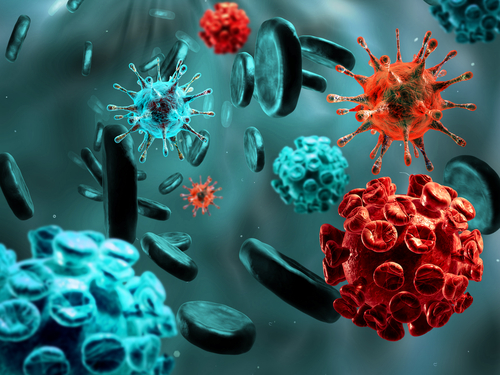AADC Deficiency and Infections

Aromatic l-amino acid decarboxylase (AADC) deficiency is a very rare disease with a range of symptoms, often first evident very early in life. Because hypotonia (floppiness) and movement disorders are among its most common symptoms, patients with AADC deficiency can be at an increased risk of infection.
Here is information about infections, how AADC deficiency might increase a person’s risk of infection, and how doctors diagnose and treat infections.
What causes an infection?
Infections occur when harmful bacteria, viruses, yeast, fungi, or other microorganisms start to grow and spread in the body. The immune system normally detects the invading germs, and mounts a defense to clear the infection they cause.
Does AADC deficiency affect a risk of infection?
Patients with AADC deficiency tend to have a higher risk for infections than the general public. Researchers don’t think that this elevated risk is due to the disease itself, but rather a complication of its more common symptoms.
For example, swallowing disorders can lead to lung infections due to aspirating (accidentally breathing in) food or liquids.
Difficulty with eating can also lead to insufficient nutrition and calorie intake, making a person more prone to infections.
Patients may also be at a higher risk due to limited movement, given their weak muscle tone and muscle stiffness, among other disease symptoms. Regular exercise is known to help strengthen the body’s immune system.
Frequent hospital visits can also expose these people to a greater number and variety of infectious agents, again raising a risk of infection.
Specific to AADC deficiency, these patients may require extra monitoring when an infection is known, as their bodies often respond poorly to the systemic stress that infection causes. An insufficient immune response could lead to a more serious infection.
How do doctors find an infection?
Doctors use an examination and various tests to diagnose an infection, depending on its suspected cause. Their first step is to look ing the patient’s symptoms, perform a physical exam, and investigate risk factors. Fever, normally one of the most common symptoms of an infection, may not be as useful in people with AADC deficiency because the disease can affect their ability to regulate body temperature. Patients may run a high temperature with or without an infection.
After an initial investigation of symptoms, doctors could order a test to analyze fluids such as blood, urine, or spit for signs of certain infectious agents. Analytic techniques used could include adding a stain before examining a sample under a microscope, trying to grow infectious agents from a sample to better detect and identify germs, and looking for a germ’s genetic material or for signs of an immune response.
How are infections with AADC deficiency treated?
The type of infection that a patient has will determine what treatments a doctor will give. For example, bacterial infections are usually treated with antibiotics.
It is not possible to directly treat viral infections, but doctors may prescribe medications to ease symptoms and help boost the immune system.
Doctors usually treat fungal and parasitic infections with antifungal and antiparasitic medications.
The immune system typically will fight off many infections without the need for medications, but this ability can be challenging with AADC deficiency. Preventing infections through proper hygiene and adhering to vaccination schedules can help to keep patients healthy. Likewise, use of a feeding tube can lower the chances of aspiration when that is evident, and help ensure adequate nutrition. Proper nutrition in combination with exercise, such as a tailored exercise plan from a physiotherapist or other specialist, may also help in allowing the patient’s immune system to better fight any infection.
Last updated: Jan. 27, 2021
***
AADC News is strictly a news and information website about the disease. It does not provide medical advice, diagnosis, or treatment. This content is not intended to be a substitute for professional medical advice, diagnosis, or treatment. Always seek the advice of your physician or other qualified healthcare providers with any questions you may have regarding a medical condition. Never disregard professional medical advice or delay in seeking it because of something you have read on this website.






